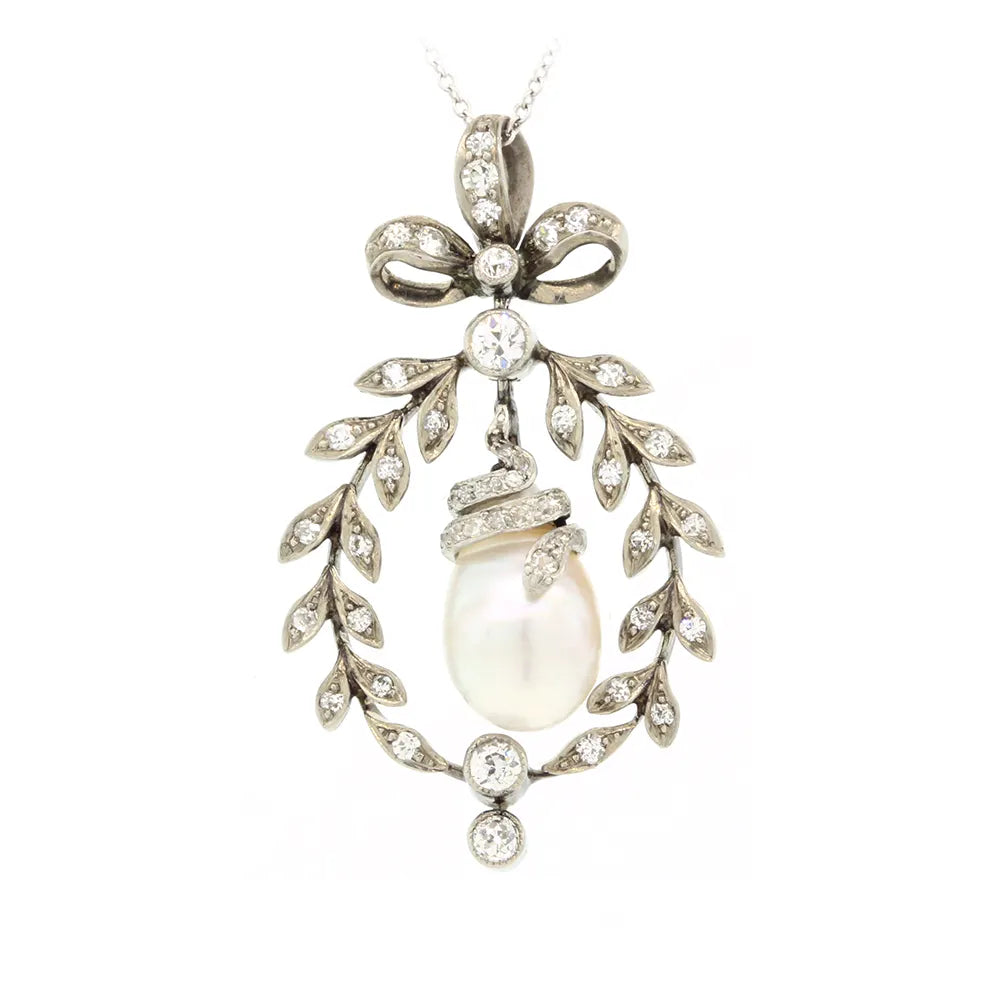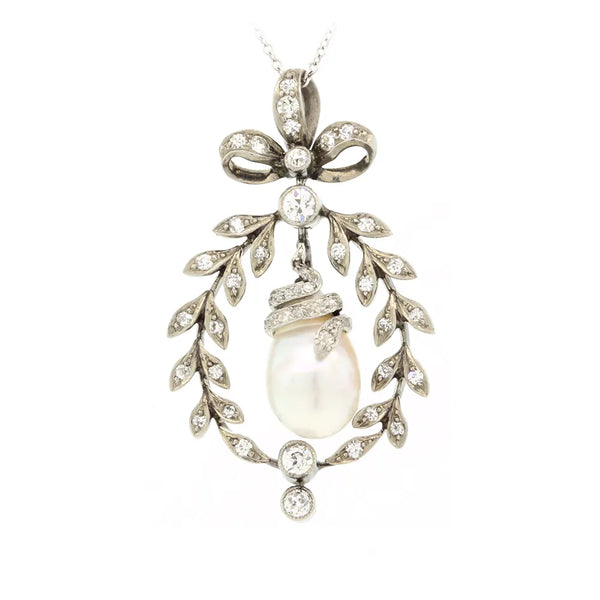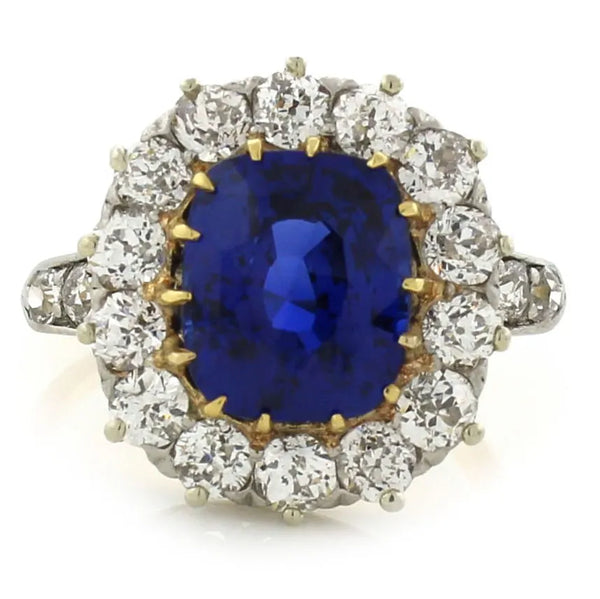
In a world full of ever changing trends and fads, it can be difficult to find the right piece to match your existing style and budget. Fortunately, estate jewelry offers a unique solution. From the bold geometric shapes of Art Deco to the lacy romanticism of the Edwardian era, estate jewelry encompasses a wide variety of choices and price points. Not to mention, an increased value over purchasing the same piece brand new.
Especially for those interested in uncommon designs and materials – and a good deal – buying jewelry second hand can be a rewarding experience.
What is Estate Jewelry?
The term “estate jewelry” roughly means that it has been previously owned, not necessarily that is has come from someone’s estate – although sometimes it does.
Estate jewelry combines a high end look with exquisite workmanship and high quality gemstones at a more advantageous price than newly manufactured pieces. And as an added bonus – it’s often one-of-a-kind which is why a good piece is always in demand whether your buying or selling. Rather than a dime-a-dozen design that crowds the market, estate jewelry is as special and individual as its owner.
The Design Eras
Whether the piece belonged to a famous queen, a star actress or a relative, there is a history and depth to estate jewelry that brand new items just do not have. Collectors of vintage pieces find that they are both wearable and serve as mementos from bygone years. In fact, most customers seek to collect pieces from all of the most popular design eras in order to round out their collections.
Here’s a quick look at the design eras buyers ask us for most in our stores:
Georgian (1714 – 1837)
The Georgian period was named for the Hanoverian Monarchs of the United Kingdom. While the reign of English kings defines the parameters for Georgian jewelry, stylistically the designs were shared internationally and the Georgian aesthetic turned up all over Europe and America.
Jewelry from the Georgian era was often inspired by the time of day it would be worn. Garnet, topaz, emerald and ruby were abundant in daytime jewelry while rose and mine cut diamonds were abundant at night. Pieces from the Georgian era are often extremely rare because they were completely handmade.
Victorian (1837 – 1900)
The Victorian era, named after Queen Victoria, marked an era of prosperity and the rise of industrialization and the middle class. Women we’re competing with men for jobs as clerks, teachers, factory inspectors and they were fighting to win the right to vote. Women’s fashion underwent a radical transition and crinolines expanded to overwhelming proportions.
As a result, women were purchasing jewelry for themselves, and to meet the demand for quality jewelry pieces, a variety of gemstones were used as affordable alternatives to more precious stones. Amethysts, coral, garnets, turquoise, seed pearls, and opals were popular gemstones on the mass market.
Victorian styles were inspired by fine art and architecture like those of the Georgian era but with more intricate and delicate features seen most commonly in lockets and brooches from the time period.

Edwardian (1901-1915)
The Edwardian era received its name from the reign of King Edward VII. Although the 20th century was in full swing, the culture of Victorian times had not completely receded, and jewelry was still being designed to convey femininity and decorum.
The design era is best known for its extensive use of filigree techniques. By applying threads of precious metals to the surface of settings, Edwardian jewelers gave their jewelry a lacy look. Garlands, ribbons, laurel wreaths, bow knots and tassels were also recreated with a new lightness thanks to the advances made in platinum fabrication.

Art Nouveau (1890-1910)
Even though the era overlapped with the Edwardian and Victorian eras and was relatively brief, Art Nouveau made a lasting contribution to the history of jewelry design. At the time, jewelers thought of themselves as artists more than makers and took extra care to craft exquisite, breathtaking jewelry.
Diamonds were used sparingly while moonstone, amethyst, opal, amber, citrine, peridot, and freshwater pearls became common in Art Nouveau rings and jewelry. Unlike prior eras that were inspired by fine art and architecture, much of the inspiration behind this era’s pieces came from Japanese art and nature.
When you think of Art Nouveau estate jewelry, picture orchids, irises, lilies, dragonflies, and butterflies as well as depictions of the female form.

Art Deco (1920-1935)
The Art Deco era was a high-spirited time period full of gangsters, flappers, and speakeasies. During the Roaring Twenties, the economy boomed and jazz blossomed just as Prohibition heightened the urge to cast aside Victorian rules.
Estate jewelry became bolder and more masculine in the early 1930’s than in previous eras. The lacy, filigree patterns of Edwardian jewelry and the soft curves of Art Nouveau gave way to brighter whites and straighter lines. Art Deco jewelry was designed to be more abstract and geometric due to influences from cubism and Dadaism. As you could guess, diamonds, white gold and platinum were the most popular choices for fabrication.

Retro (1930’s-1940’s)
Even in the midst of economic depression, Retro jewelry is said to be some of the most elaborate and eye catching pieces ever created. Jewelry from this era was inspired by Hollywood’s golden age as ordinary women wanted jewelry that reflected the glitz and glamour they saw on the big screen.
Cocktail rings, bracelets, and necklaces were designed to be oversized, lending the jewelry a playful and whimsical dimension. Retro jewelry was also characterized by curved designs and feminine motifs such as bows, ribbons, ruffles, and flowers—but almost always on a larger scale.
A scarcity of platinum led jewelers to use more gold than in previous eras, which led them to experimented with new alloys. By mixing yellow gold with other metals like silver and copper, they produced colored gold with beautiful shades of rose and green.
Jewelry designed after the Retro era is considered to be contemporary estate. Although not as sought after, hold on to those age defining pieces as with these time periods, they’ll be in high demand later in life.
So, whether you’re looking to start a Retro collection, own a piece of history from the Victorian era or just want to find the perfect cocktail ring, estate jewelry is the ideal way to individualize your look, stay on budget and showcase history from the past.
Interested in Seeing Estate Jewelry First Hand?
Join us for our Annual Estate Event on March 3rd-5th. We’ll have an expanded collection of pieces from all the major design eras and our Estate manager, Pete, will be on location to give you the history of each and every piece. If you can’t make it to our event and would prefer a private showing, schedule an appointment.


